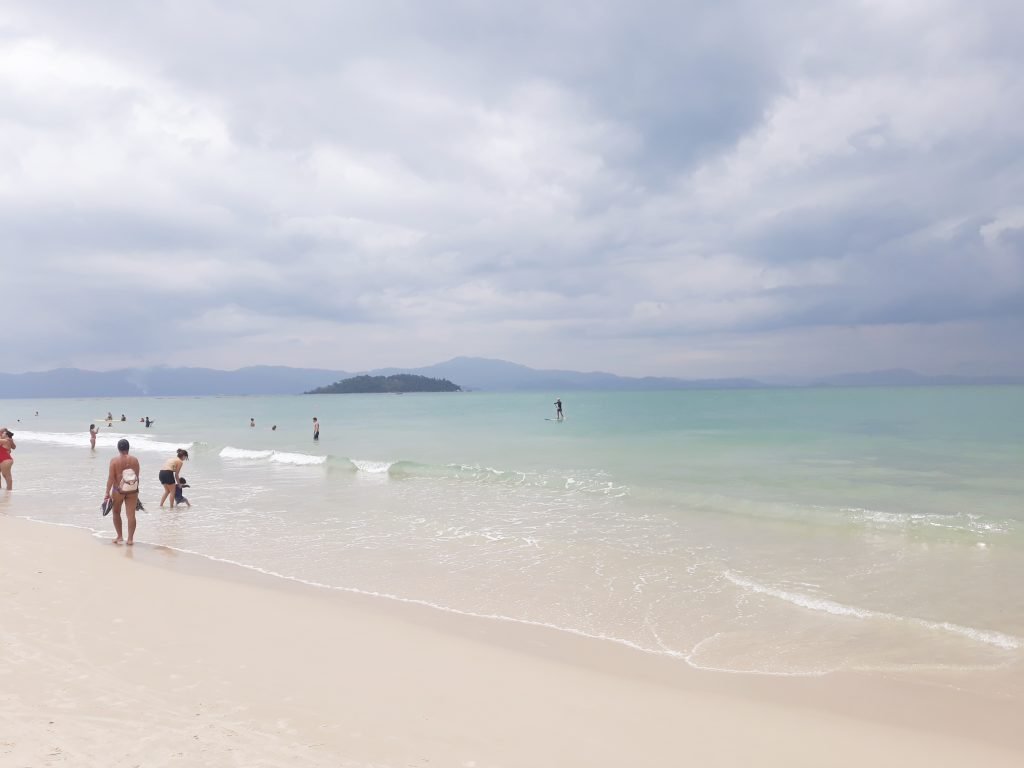In 2024 alone, more than 13,000 Americans got their first French residency cards, a 5% increase from the previous year. Nowadays, nearly 153.000 US citizens call France their new home, and many of them went to retire in Southern France.
And it keeps rising: The number of Americans moving to France has tripled since pre-pandemic years.
It is a massive wave that in many cities is even surpassing the Brits!
But why?
Why so many Americans are moving to France?
You’re about to discover the reasons – a secret that will make you forget Florida or Arizona.
But here is a tip: Americans in Southern France save over 44% on monthly expenses compared to living in the U.S., while enjoying free healthcare, and lower taxes.
Sorry, Sorry, my mistake: It is not that they have lower taxes – they actually have ZERO taxes over their retirement pensions, while enjoying the most ideal weather for human life: the Mediterranean weather.
So today you will discover the Pros, the Cons, and the Best Places to retire in Southern France. Ready?
First, let’s define what is Southern France…
…because not everywhere in France do you find amazing weather and low costs.
In Paris, for example, you have neither.
So, by Southern France I mean the provinces of Occitanie, Provence-Alpes-Côte d’Azur, Nouvelle-Aquitaine, Auvergne-Rhône-Alpes, and Corsica.

And in a few paragraphs, I will give you the absolutely best places to move to in these regions.
But now, let’s talk about the Pros of living in Southern France.
We start with the…
Lower Cost of Living When Compared to Major U.S. Cities and Paris
When you compare Toulouse or Montpellier to typical American cities, you’ll notice right away how much cheaper it is to get by day to day.
And allow me to tell a little personal story that kind of exemplifies how low is the cost of certain things there.
Not long ago, I was in France, and my wife wanted a coffee, so we went to a coffee shop and I ordered one. The waiter told me about some promotion, but, well… my French is not the best, so I just said: “oui, oui, c’est bien”.
I paid to the cashier, and then waited for my order.
Then the waitress brought me 4 cappuccinos, and my wife got surprised, asking me why I paid for 4 cappuccinos.
I said “no no, I just paid a few euros”, but well, that is how cheap you can have a coffee – or FOUR cappuccinos – there.
But the low costs extend beyond the coffee shops, to very relevant matters like housing. You can find furnished apartments for less than 750 euros per month – 780 dollars.

In the US, in 46 of the 50 states, the average rent prices for a 1-bedroom apartment are higher than that. The only exceptions are West Virginia, Iowa, Arkansas, and South Dakota.
And Montpellier is a really nice city – often considered one of the best cities to live in France!
And if instead of renting you prefer to buy, that’s where you can save a lot. In Perpignan, for instance, a nice 1,500-square-foot home with a little yard goes for around €250,000. That’s often half the price of similar properties in Paris.
Soon, I will tell you more about housing in 5 specific cities, and I bet you will be impressed by the quality and the price.
But not only housing is more affordable – If you’re used to spending a small fortune on basic groceries back home, you might be pleasantly surprised by what you’ll find in Southern France.
The department of Charente, in Nouvelle-Aquitaine, not far from Bordeaux, has some of the best prices for fresh vegetables, fruits, and other produce of entire France!
Another plus I noticed in France is the way they do their grocery shopping: forgetting artificially illuminated halls from hypermarket chains – no, here the experience is completely different.
You will go to an open-air market, to buy directly from the producer, the freshest things you probably ate in your entire life.

The differences in flavor are mindblowing
But forgive my overexcitement, I am supposed to talk about the cost of living and not about how tasty are the tomatoes.
So, continuing, certain processed items like peanut butter or some imported goods can cost more in Southern France, but staples such as fruits, vegetables, and seafood tend to be cheaper.
Healthcare is another area that stands out.
A routine doctor’s visit typically costs around €30, a fraction of what you might expect in the U.S., and supplemental private insurance (known as a mutuelle) keeps those bills from stacking up. Sometimes, that means you can get an X-ray or see a specialist without fearing the cost.

It’s a far cry from what many Americans face, and it’s often a turning point in the decision to retire there.
The next point might open a bit of polemics, but…
Another Pro of Southern France is how safe it is.

Yes, I know this sounds contradictory since not long ago I made a video about how Paris is getting more dangerous.
However, Southern France is, in general, much safer than Paris.
Towns and even larger cities in the South have a calmer vibe than Paris. Toulouse, Montpellier, and Annecy have lower crime rates than the capital, and places like Annecy even score as some of the safest cities in the entire country. A close-knit community atmosphere is common in smaller locales like Aix-en-Provence or Perpignan. Folks tend to look out for each other, and it shows in everyday life.
There are, however, some exceptions – some places in the South that are not that safe.
One of them is Marseille, which has very specific problems regarding cultural and ethnic conflicts, and gang issues – it is a very large city, with 1.7 million people in its metro area, so yes, there are some issues there.
The other exception is Corsica – if you look at the statistics, Corsica is one of the most dangerous places in European France.
Although I had been to France, I had never been to the Island of Corsica specifically, so to understand why these numbers there are so high, I asked a local why this island had such high numbers in terms of violence
This is what he told me:
“Crime is different. As a tourist, for example, you have a lower chance of getting robbed or anything like that in the streets even at night. This doesn’t mean that there is no violence, there is. It’s just that violence in Corsica happens in other contexts. A lot of Corsicans consider violence as a good way to resolve conflicts, so don’t get into conflicts in the first place. Knowing all of this, I feel safer raising my kids in Corsica than on the continent. It’s a very safe place for kids, women, old people.”
So yes, there are some places that are violent in Southern France too, but those are very few exceptions.

The next pro is the higher quality of life and a relaxed lifestyle
Southern France is famously relaxed. People actually take the time to chat with neighbors, linger over lunch, and enjoy the outdoors. Contrast that with many U.S. cities, where it feels like everyone’s rushing from one appointment to the next.
But what is funny is that, even if you compare Southern France with Northern France, the differences are considerable.
Check what a resident who knows both sides told us:
“The difference between the north and south of France, with a line that could be La Loire, is the exact one that north of Europe vs south of Europe. North of France looks closer to north European culture, while the south of France has a more Mediterranean Culture.”
Another resident told me this:
“People in the south are often closer to our stereotype of Italian or Spanish people, while people in the North would be closer to what you’d imagine from British, Dutch, or German people: more reserved, discreet, and often more conformist and sometimes cold even.”
So you can expect a Mediterranean lifestyle in Southern France, and what does that mean exactly?
Well, in Aix-en-Provence, for instance, you can start your day by checking the farmers’ market for fresh tomatoes, cheese, and maybe some lavender honey. By the afternoon, you could be sipping coffee at a sidewalk café and discussing if the Saint-Étienne will be able to avoid relegation.
Evenings might mean meeting friends for a glass of local rosé. These small, satisfying rituals create an enjoyable rhythm of life.

One of the unsung heroes of daily life is the public transportation system,
…especially in mid-sized cities or larger. Buses, trams, and trains connect most major towns and cities, so you don’t really need a car. It’s easy to zip around or visit neighboring regions—even a trip up to Paris can be done in a matter of hours on the high-speed TGV. That sense of connection, both socially and literally, is part of what draws many retirees to this region.
The next advantage of retiring in Southern France probably is the one that you expect to hear about, BUT… there are some issues with it.
I am talking about the…
Universal Healthcare That Becomes Free After Three Months
France’s healthcare system is lauded around the world, and retirees can join in after just three months of living here.
The coverage, known as PUMA, takes care of most major medical expenses, leaving you with only a small co-payment for many services. That alone can bring huge relief to folks used to unpredictable medical bills back home.
You’ll still find differences in the quality of care between big cities and smaller towns. Larger cities, including Toulouse, Bordeaux, and Montpellier, have renowned hospitals, whereas smaller places might require some waiting for specialized care or English-speaking doctors. Many retirees add private insurance to their public coverage so they can access private clinics like Clinique Axium in Aix-en-Provence, which typically offer shorter wait times.
However…
While France’s healthcare system is often praised for its universal coverage, recent developments have highlighted several challenges. One major issue is the uneven distribution of medical professionals across the country. As of 2024, approximately 87% of France is considered a “medical desert,” meaning these areas lack sufficient healthcare services. This situation affects about one-third of the population, leading to longer wait times and limited access to care.
Financial strains also burden the system. In 2023, the deficit for the public health insurance branch exceeded €11.4 billion.
So yes, there are issues – still, it is a functioning universal healthcare that, for many, it is very advantageous.
By the way, if you’re reading this article, you’re probably planning to travel abroad for a longer time, and you want to save money and pay fewer taxes. I’ve written three top-rated Amazon books on living abroad, based on my experiences and insights from hundreds who’ve done the same – You can purchase them through this link.

The next pro is less debatable – in fact, I doubt someone would disagree about it.
The Warm, Mediterranean Climate With Plenty of Sunshine

Do you daydream about mild winters and sunny days? Southern France might be your sweet spot. In cities such as Montpellier or Perpignan, it rarely dips below 50°F (10°C) in January, so you’re not battling brutal cold. Summers are warm, hovering around 85–90°F (29–32°C), which is prime time for beach outings or leisurely naps in the shade.
If you prefer more seasonal variety, somewhere like Annecy might suit you better. It’s closer to the Alps, so you’ll see snowy peaks in winter, but you still enjoy warmer days and beautiful lakeside views in summer. Some regions, like the foothills of the Pyrenees and southern Auverngne, have more rainfall and precipitation, but in general, you can count on plenty of sunshine.
Which brings our next pro!
Fresh, Healthy Food and a Culture That Encourages an Active Lifestyle
You’ve likely heard of the Mediterranean diet, right? It’s rich in fresh produce, lean proteins, and healthy fats like olive oil. Southern France practically wrote the playbook on this kind of eating.
Try local markets like Les Halles de Narbonne or the daily farmers’ market in Aix-en-Provence, and you’ll see bins of just-harvested vegetables, fresh fish, and artisanal cheeses. People here don’t think twice about walking or cycling to pick up groceries, which naturally keeps you active.
Cities have well-maintained bike lanes and pedestrian-only zones, encouraging everyone to stretch their legs. Public promenades and parks are a regular hangout for families, seniors, and anyone who loves being outside.
The next point is a more pragmatic, and probably is what brought you to this video in the first place.
Americans Pay No French Income Tax on U.S. Pensions
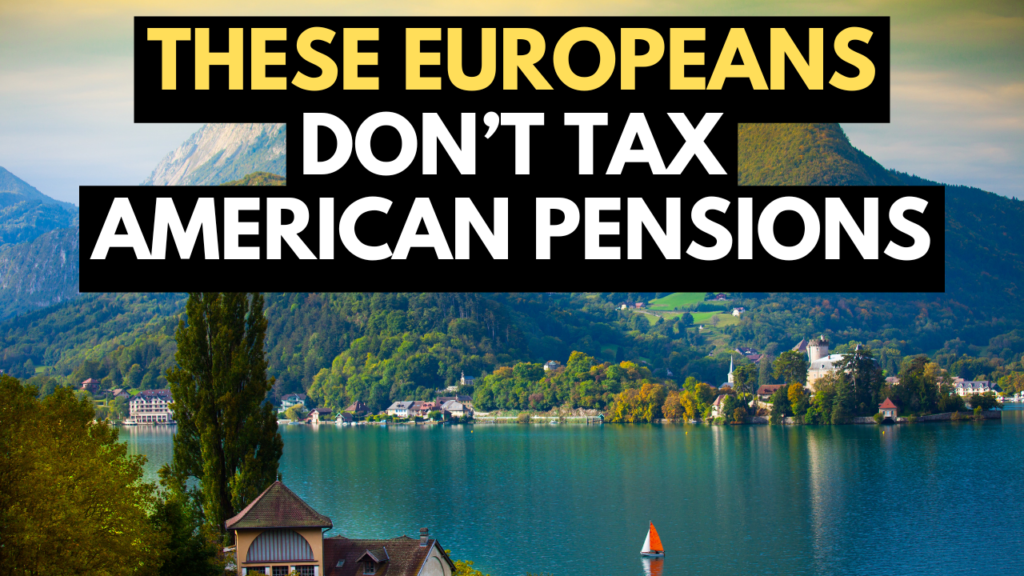
Money talks, and the U.S.-France tax treaty happens to speak your language. Imagine receiving your Social Security or military pension every month without losing a portion to French income taxes. That’s a strong incentive, especially if you’re watching your budget carefully. While private pensions and investment income may face some taxes in France, the rates and available deductions often prove friendlier than you’d find in the U.S.
When you add up reduced healthcare bills, and lower property taxes, Southern France stands out as a prime spot for stretching your retirement funds. Even French inheritance laws tend to be favorable for spouses, which can be reassuring when you’re settling your affairs.

So now that you know the pros, it is time for us to talk about the…
Best Places to Retire in Southern France
The southern regions of France have many towns that cater to different preferences. You can live by the sea, near the mountains, or in the countryside. Affordability, safety, healthcare access, sunny weather, and reliable public transport are all factors considered in the selection of these 5 cities you will hear next. They are not in order from best to worst, but by size, from the one with the smallest population to the biggest.
We start with Ajaccio – An Island Escape with Mediterranean Beauty

If the idea of island living sets your heart racing, Ajaccio might be calling your name. With a population of approximately 72,647, is the smallest among the best five cities to retire in Southern France.
As Corsica’s capital, it embraces the Mediterranean vibe wholeheartedly. The pace is slower there—perfect for retirees who’d rather not get caught up in city noise.
Ajaccio has one of the warmest winters in France. January temperatures can hover around 58°F (15°C), and you’re likely to see folks strolling the Plage Saint-François even when it’s supposed to be “chilly.” The mountainous scenery also provides year-round entertainment, whether you fancy a gentle hike or simply appreciate the panoramas from a distance.
You might be reluctant to move to an island since it means you are stuck in the same place, but not in Ajaccio.
The Napoleon Bonaparte Airport offers flights to over 20 European destinations, though you may need to stop in Paris or Marseille for transatlantic travel. The city is small enough that walking covers most of your errands, and buses fill in the gaps. Fresh seafood is a staple at the Ajaccio market in the old town, and the local hospital—Centre Hospitalier d’Ajaccio—ensures that you’re not stranded if you need medical care. And this hospital has some remarkably good reviews.
In terms of housing, an apartment close to the city center will cost you 720 euros per month – around US$750.
There are some known issues with the mafia in Corsica, and some items that are not local (and need to come by air or sea) are a bit more expensive, so be aware of that.
The next city, however, has no mafia, or separatists, and is also mid-sized.
Perpignan – A 120,000-resident city with affordable living and a Catalan influence.

Perpignan sits near the Spanish border, and you can definitely sense Catalan flair in its food, architecture, and way of life. It’s also among the most budget-friendly spots on the Mediterranean coast.
During winter days, rarely the temperature goes single-digit, making it a warm choice for anyone fleeing colder places.
The city offers a relaxed lifestyle with plenty of little cafés and local markets that stay buzzing even in the off-season. If you enjoy sunbathing, just 20 minutes by car from there is a beach called Torreilles-Plage, but be aware that the southern part of it is a naturist beach.
Another good point of Perpignan is that it is just 90 minutes from Barcelona, and everything the second-largest Spanish city offers, including the Barcelona-El Prat Airport, with direct flights to many parts of the U.S. and other European countries.

The city center remains fairly compact. You can get around on foot or rely on the dependable bus network.
In terms of housing, and here is probably the best part: there are plenty of apartments available for less than 700 euros (730 dollars), so you will save on housing.
The high point, however, is all the smaller villages around Perpignan – they are beautiful, they are calm, they are scenic, and British retirees love them. This is what a resident of Perpignan told us about the city and surroundings:
“Village around are more comfortable, especially as a retiree. You avoid the rush of summer/new school year, and it also has nice weather, long sunny days without being too hot. If you don’t plan to have a car then yes I understand preferring Perpignan.”
The next city is almost the same size as Perpignan, but in all other aspects, it is very, very different.
The third city is Aix-en-Provence – An elegant city with 142,800 residents.
If you’re drawn to a city steeped in refinement, Aix-en-Provence might be your ideal match.

Known for its artistic background and eye-catching architecture, Aix has a reputation for sophistication. The city hosts the Festival d’Aix, a prestigious opera festival that draws music enthusiasts from across Europe. If you mosey down the Cours Mirabeau, a broad avenue dotted with cafés, bookshops, and gurgling fountains, you’ll quickly sense the refined atmosphere that lingers here.
Not everyone actually likes this atmosphere of a refined city, as a French told us:
“Aix gets boring after two hours. It is for well-dressed retired folks with tiny dogs.”
On the other hand, some people praised the city for multiple reasons, like this local:
“Aix has excellent weather, it is safer, much calmer, like a small city. It is very green, and easy to reach the countryside (which is beautiful).”
As you can see, some people praise the city for being very calm, others complain that it is very calm to the point of being boring, but this is not really an issue if you consider that Aix is just 30 minutes from Marseille by car – and Marseille being a large city, it offers all the fun you might be looking for.

And if you want to travel around, the Marseille-Provence Airport has flights heading to over 100 global destinations. The TGV station just outside the city zips you up to Paris in around three hours.
Within Aix itself, buses are frequent, but many people opt to walk through the historic center. The winter climate is gentle. You’ll see January highs around 53°F (12°C), and the region is famously sunny.
The Place Richelme farmers’ market brims with local cheeses, truffles, and other goodies that tempt passersby each morning. Private healthcare options like Clinique Axium – one of the most reputable in the region – also provide an extra layer of comfort for those wanting English-speaking specialists.
This elegance and sophistication of Aix make it a bit more expensive than the other cities we mentioned, but not by much. You can still rent an apartment in a very good and central location for 850 euros, or less than US$890.
The last 2 cities in our list are already considered big cities.
The first is Montpellier – A City with Almost 300,000 Residents and a Mediterranean Lifestyle
Montpellier has become a magnet for anyone seeking a bustling city with Mediterranean flair.
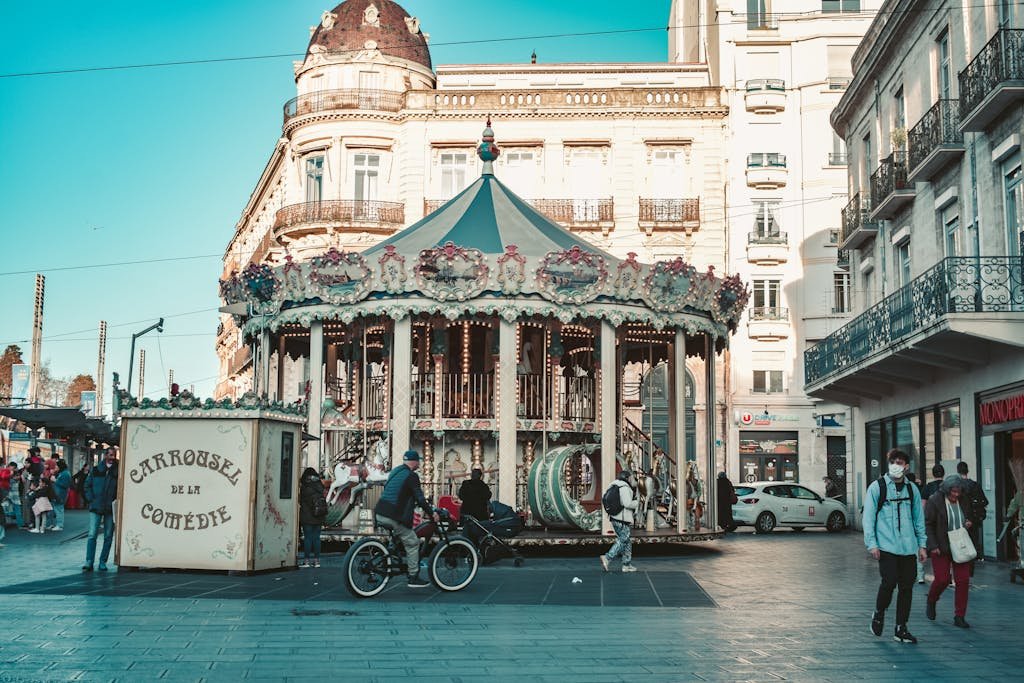
It’s a place where you’ll find historical architecture combined with a good infrastructure, including a reliable tram system crisscrossing the city.
The tram network of this city is the third largest in France, with 4 lines, 84 stations and 60 kilometers. You can hop on a tram for a routine grocery trip, or to a doctor appointment – something that not many Americans are used to.
Talking about healthcare, the city hosts the Centre Hospitalier Universitaire (CHU), a network of six hospitals, two clinics, and a medical institute.

And the weather? Let’s just say your winter coat might spend most of its time in the closet. January highs are around 54°F (12°C), which is something you would expect in Texas. And if you’re into lazy beach days or brisk seaside walks, Palavas-les-Flots is a quick trip away. Locals often enjoy morning swims followed by an afternoon coffee at the Place de la Comédie, a popular square that reflects Montpellier’s lively spirit.
The housing market there is a bit complicated. It is difficult to find places to rent since the city has so many students.
This is what a local told us:
“Born in Montpellier, I love this city, but a negative point is that real estate is very expensive. The south of Montpellier, closer to Carnon, is for me the best spot but the first ring is in high demand and rentals are quite difficult to find.”
The next city, however, has much more options to rent, since it is a much bigger city.
It is Marseille!
No, I am kidding, it is not Marseille.
It is Toulouse!
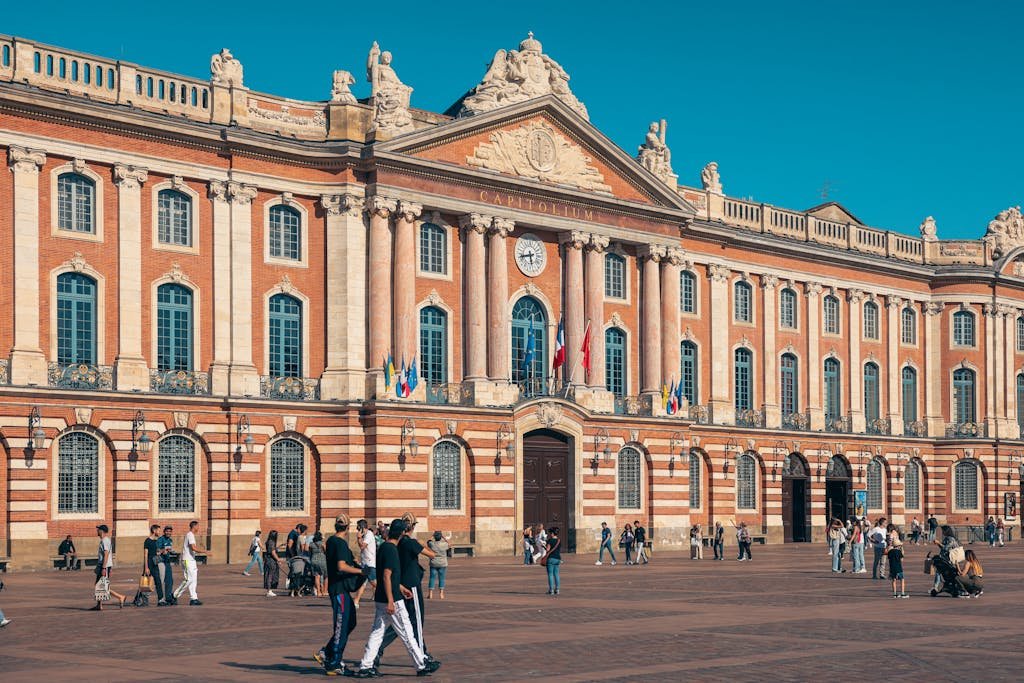
This city is the capital of the Occitanie region and has around half a million residents. It is nicknamed La Ville Rose because of its pinkish-hued terracotta buildings. This gives the whole town a warm and welcoming look.
Culturally speaking, Toulouse is known for iconic structures like the Basilique Saint-Sernin and the Place du Capitole – this las one is the vibrant heart of the city and a classic meeting spot.
Getting around is a breeze, thanks to the efficient metro, trams, and buses that spread throughout the city – and despite being a bigger city, it is still very affordable – it is 33% cheaper than Paris.

Compared to some sunny American cities, Toulouse is 37% cheaper than Fort Lauderdale in Florida,

and 45% cheaper than San Diego in California.
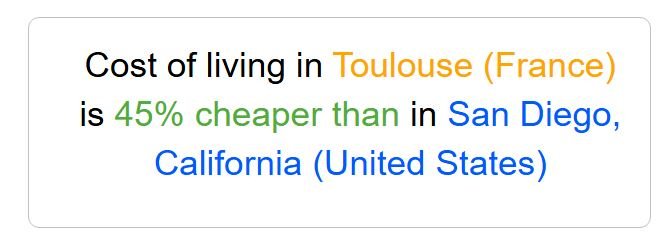
Not only is Toulouse relatively affordable—particularly in neighborhoods like Saint-Cyprien or Carmes—but it also has a comfortable climate.
You might see an average winter high of around 52°F (11°C), so it never feels too gloomy. Strolling along the Canal du Midi is a local pastime, and many retirees love the strong expat community that’s grown here – from what I hear, most of these expat retirees are British, so English is not an issue.
This is what a former resident said about Toulouse:
“Really lovely. It’s still affordable and you can have a good life with a lower salary – I lived there for a few years on minimum wage. Excellent food, gorgeous surrounding areas, and friendly people – not to mention the weather is mostly great. The city is walkable and there is a huge sports offering, from hiking to swimming to cycling. Culturally it’s also okay, but not as exciting as Paris. I loved the proximity to Spain, and the airport takes you to loads of places.”
Now, if all this about Toulouse didn’t get you impressed, wait until you hear about HOUSING there…
Because in this city you can find plenty of good apartments to rent for less than 600 euros – less than US$625!
Now, you might have noticed that in this article I wrote about all the pros of Southern France, and the best cities to live there, but not about the cons and challenges of living in France – and believe me, they exist.
One of them is the language barrier – you MUST learn some French if you plan to move to French.
But don’t let that frighten you – there is a funnier and nicer way to learn a new language. The method I use to learn new languages is this one (by using this link you get a 40% discount after trying for free, and if you subscribe, you’ll get a 40% discount!)
But that is not the only thin
In this article here at your left I list 7 reasons people regret their decision to retire in France – It is an article you should read, because many of these reasons are easy to avoid – and some of them are very specific to Americans.
Levi Borba is the founder of expatriateconsultancy.com, creator of the channel The Expat, and best-selling author. You can find him on X here. Some of the links above might be affiliated links, meaning the author earns a small commission if you make a purchase.
